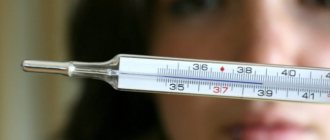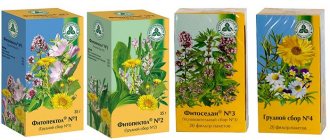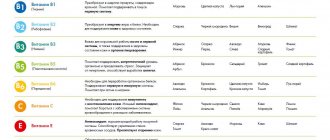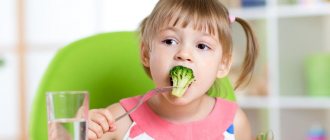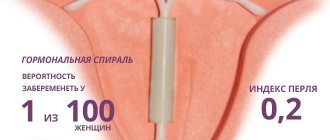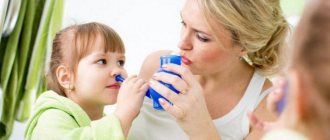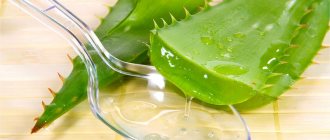From the moment the baby is born, everything that a woman eats or drinks ends up in the baby’s body. Therefore, adjustments are made to the diet of a nursing mother. Some products are excluded completely, others are limited. At the same time, the mother’s diet should be balanced and sufficient in calorie content so that the child receives all the necessary nutrients in the right quantity.
Recommended ratio of proteins, fats and carbohydrates in the diet: 1:1:4.
Protein products in the diet of a nursing mother
During breastfeeding, it is preferable to obtain proteins from various sources. You need to eat meat, fish and plant products.
Protein norm for a nursing woman: 110-115 g of protein, 80% of which is animal protein.
The most preferred meat products are beef, rabbit, chicken, turkey, and lean pork fillet. The skin of the bird must be removed. It is allowed to include chicken and quail eggs in the diet. It is better boiled or in the form of an omelet with low-fat milk.
Can a nursing mother eat fish? The most preferred: hake, cod, flounder, fatty sea fish.
Also, don't ignore grains. Rice and buckwheat porridge are useful both during pregnancy and lactation.
It is better for nursing women to refrain from eating caviar, shrimp, and sausages.
What is not allowed and why
First of all, the group of potentially dangerous products for babies includes:
- Bitter dark chocolate (the one with about 70% cocoa) is a strong allergen. According to some pediatricians, you can try to introduce milk or white chocolate into your diet from 3 to 6 months, but it is important to be prepared for an allergic reaction.
- Seafood, some types of fish and caviar are the first to accumulate heavy metals. Caviar may be of poor quality and cause poisoning. Shrimp are an allergen. Among the fish that cause allergies are mackerel, tuna, and red fish.
- Raw vegetables are prohibited in the first two months, especially store-bought ones, as they can cause poisoning. In addition, they improve intestinal motility and cause bloating.
- Citrus fruits and exotic fruits are allergens that are allowed only after 3 months, and they must be administered in slices. What fruits and berries are still dangerous? Grapes and plums, apricots, if the baby is swelling.
- Watermelons - they can be poisonous.
- Semi-finished products, sausages, smoked foods, fatty broths, pickles - cause colic in the baby.
- Mustard, horseradish, hot peppers, garlic, hot sauces, onions (not to be confused with green feathers) - cause heartburn in the mother, abdominal pain in the newborn, and change the taste and smell of milk. If you really want to, they can be introduced no earlier than 6 months.
- Blue cheeses can cause poisoning.
- Black strong coffee and tea cause anxiety in a child.
- Any alcohol.
When planning your diet, remember that nutrition during lactation is not a test, but an investment in the health of your child. Do it now, and in the future he will appreciate your efforts.
Fats in the diet of a nursing mother
Fats must be included in the diet of a nursing mother. They are good for the nervous system, immunity, skin, hair and nails of mother and baby. However, they do not affect the fat content of breast milk.
It is preferable to obtain fats from oil: corn, olive. Good quality butter is acceptable in small quantities.
Fermented milk products are suitable: low-fat kefir and cottage cheese, yoghurts and other products up to 5% fat. Among the useful cheeses, Adyghe and Chechil. But it is better to avoid unpasteurized soft cheeses such as brie and camembert. They may contain bacteria that cause intestinal infections.
Lard, margarine, mayonnaise, chicken and turkey with skin, cod liver, fatty dairy products, sweets and fast food are temporarily prohibited.
End of the first week after birth
A breastfeeding woman should not starve. Meals after childbirth in the first days should be frequent and divided; ideally, after each feeding you should eat some light food and drink warm tea or compote.
At the end of the first week after the birth of the baby, the mother can:
- Warm sweetened tea, cranberry juice, dried fruit compote, herbal infusions.
- Stewed vegetables: beets, zucchini or eggplant, carrots, pumpkin with the addition of a couple of drops of vegetable oil.
- You can make crackers for tea or soup from black or rye bread.
- Introduce a few pieces of low-fat sea fish into the diet, observing the baby’s well-being.
- Some mashed potatoes or good quality pasta.
- Lean boiled beef.
- Fermented milk products (no more than 300 g per day).
- Once a day, be sure to eat low-fat soup or borscht without cabbage.
- Be careful when introducing nuts and hard cheese into your menu.
- Eat one banana and two baked apples a day.
Introduce new foods into your diet carefully, in small portions, carefully observing the baby’s body’s reaction to them.
Portions should be small so that mom does not gain extra pounds.
What fruits can a nursing mother eat?
Most fruits and vegetables are sources of vitamins and microelements, carbohydrates and healthy fiber. But not all of them are equally safe for the baby. Some can cause allergies or eating disorders in infants. Let's consider the question of what vegetables and fruits a nursing mother can eat.
Wild berries are recognized as the safest in relation to possible allergic reactions: blueberries, blueberries, lingonberries, cranberries, as well as dried fruits and fruits rich in pectin. A nursing mother can eat apples, plums, and pears in moderation.
Vegetables on a nursing mother's menu: zucchini, cauliflower, broccoli, beets, pumpkin, and some potatoes. All vegetables are steamed or boiled. Raw - less often. Try to give preference to seasonal vegetables, preferably from your own garden.
But it’s better not to eat eggplants, peppers, tomatoes, onions, garlic, white cabbage, and cucumbers. Grapes are not advisable - they can cause flatulence and stool problems in the baby. Exotic fruits that do not grow in the area are also temporarily prohibited.
Rules for choosing food products
The main criteria that should guide the mother of a newborn from the moment he is born until he is one month old:
- quality;
- authenticity;
- freshness;
- seasonality;
- diversity.
It is advisable to choose vegetables and fruits that grow in your native region. It is worth including in your diet products of plant origin, which have come to bear fruit.
If possible, it is better to eat vegetables grown in your own garden or on the plots of farmers who do not use fertilizers. Then you can eat almost any fruit or vegetable - they will not cause allergies in your child.
Products of plant origin
Vegetables and fruits are certainly needed by the mother’s body - they are sources of nutrients, and also contribute to normal intestinal function, have a positive effect on the immune system, some improve the quality of milk and enhance its production. However, enriching the table of a mother who is breastfeeding with them should be done with caution, excluding those that could cause potential harm to the health of the newborn.
In the first months after childbirth, most of the plant gifts of nature should be consumed after heat treatment (steaming, boiling, baking).
When choosing products for your table, a nursing mother (especially in the first month after giving birth) should pay attention to the color of the products. Pigmented red fruits and vegetables are more likely to cause allergies than their green counterparts. This applies to apples, pears, apricots, raspberries, cherries, cranberries, etc.
Whatever vegetable or fruit the mother introduces to her menu, you need to monitor its effect on the baby’s condition and digestion. In the first month after childbirth, you can include boiled potatoes, zucchini, cauliflower and broccoli in your diet. From the second or third month - carrots, beets, pumpkin. Baked apples (green) and raw bananas in small quantities are also allowed from the very birth of the baby (more details in the article: how to cook baked apples in the oven for nursing mothers?).
READ IN DETAIL: Can a nursing mother eat pears?
Meat products
Official medicine believes that the nutrition of a woman nursing a child is unthinkable without animal proteins. This issue is controversial, but for those who are accustomed to eating meat, giving it up during lactation is pointless, if not harmful. It is believed that a suitable protein for a baby would be one extracted from poultry (preferably turkey, since chicken can cause allergies), rabbit or calf.
Since many manufacturers use antibiotics in feed to rid livestock and poultry of infectious diseases, as well as hormones to accelerate the growth of livestock, it is better (if possible) to use poultry meat raised at home or on small farms that do not abuse pharmacological drugs.
In any case, the meat is consumed boiled or stewed. Why can't you eat fried foods while breastfeeding? Proteins and vitamins are destroyed very quickly with this type of cooking, but there are more than enough carcinogens in fried foods - they are harmful not only to the baby, but also to the mother. It is also better for a nursing mother to avoid cooking food based on meat broth until 3-4 months.
READ ALSO: nutrition table for a nursing mother by month
Fish
Breastfeeding mothers can be recommended low-fat varieties of fish - pollock, pike perch, hake or flounder. It is believed that they may slightly affect the taste of milk, especially for flounder or mackerel. However, there is no confirmed data for this. A well-known consultant on breastfeeding, Natalya Razakhatskaya, claims that there is no direct connection between the food consumed and breast milk, because it is not formed from food, but from the components of blood and lymph.
READ ALSO: Is mackerel allowed while breastfeeding?
Seafood and caviar can cause severe allergies; in this sense, squid is considered the safest, but it is recommended to introduce it into the diet only closer to six months. In addition, it is easy to get poisoned by seafood - if you eat fish, it should be the freshest. It can be prepared, like meat products, by boiling and stewing.
It is also better not to cook fish broths for the same reasons as meat ones. Fish farms use the same antibiotics and hormonal agents.
Cereals
Cereals, especially during the first month, form the basis of a nursing woman’s diet. The most beneficial for mothers and their babies during breastfeeding are buckwheat and oatmeal. Corn (inhibits the processes of decay in the intestines) and wheat are considered allowed. But rice cereal, beloved by many, removes beneficial microelements and is not recommended for constipation. One of the significant advantages of these cereals is their low allergenicity and high safety.
You should not eat cereals containing gluten (semolina, pearl barley, barley, rye) - they are potential allergens.
Milk and dairy products
Milk and fermented milk products are a storehouse of easily digestible protein, promote lactation and normalize digestion. Experts have different opinions regarding the consumption of milk in the first month after childbirth. Some categorically do not recommend whole cow's milk, others suggest drinking it anyway, adding it to weak tea to increase lactation, but limiting the amount to 200 ml per day.
READ ALSO: What fermented milk products can you eat while breastfeeding in the first month?
Cottage cheese, like all fermented milk products, must be fresh; it can be consumed no more than 150 grams per day. Liquid fermented milk can be drunk no more than 800 ml per day (kefir, fermented baked milk, bifilin, yogurt, acidolact, etc.). The fat content of such products should not exceed 2.5%.
What can a nursing mother drink, how much fluid does a woman need during breastfeeding?
For normal breastfeeding, a woman needs to drink at least 2 liters of fluid, including water, teas, and light soups.
A nursing mother can take juices (freshly squeezed, preferably from seasonal fruits), tea, still mineral water, and fermented milk drinks in moderate quantities.
On the first day after birth, the volume of fluid consumed should not exceed 800 ml.
What can nursing mothers eat: cheat sheet
- Beef, lean pork (loin)
- Rabbit, chicken, turkey (no skin)
- Hake, cod, navaga, flounder, fatty sea fish
- Chicken and quail eggs
- Corn, olive, butter
- Good quality cheese: Chechil, Adyghe
- Fermented milk products up to 5% fat
- Cereal and bran bread
- Buckwheat, rice, oatmeal, muesli
- Pasta made from durum wheat
- Berries: blueberries, blueberries, lingonberries, cranberries
- Vegetables, zucchini, cauliflower, broccoli, pumpkin
- Fruits: plums, apples, pears
- Freshly squeezed juices, tea, still mineral water.
The products that are included in the list of what a nursing mother can eat are necessary for a woman undergoing breastfeeding. Stick to your daily norms!
Products that are prohibited from consumption
Products with the following effects are not recommended for mothers who are breastfeeding their baby:
- allergenic;
- toxic;
- stimulating;
- gas-forming.
The list of these products is quite large, especially in the first month after childbirth. So, potential allergens may be:
- tropical fruits and citrus fruits;
- red fruits and vegetables;
- caviar, seafood and fatty red fish;
- chicken eggs;
- cocoa beans and coffee;
- whole cow's milk;
- peanuts;
- honey;
- crayfish and crabs.
READ ALSO: Can a nursing mother eat honey?
What products are strictly not recommended for nursing mothers? Of course, those that can cause maximum damage to the baby’s health due to their toxic properties: alcohol, vinegar, all types of fast foods, foods with dyes and preservatives, smoked foods, spicy, salty, fatty and fried foods and spices. It is better for a nursing woman to exclude these “little joys” from her table for the entire period of breastfeeding; they will affect both the body of a newborn and a child 4-6 months old.
Watermelon, despite its ability to stimulate milk production, is best not eaten (we recommend reading: can you eat watermelons while breastfeeding?). Firstly, this berry can act as an allergen, and secondly, it accumulates nitrates and urea, which unscrupulous farmers stuff watermelons with.
When feeding your baby, it is not recommended to eat pastries and sweets, or any products containing cocoa beans and coffee due to their stimulating effect. For the same reason, you should not drink strong teas (black and green).
READ ALSO: Can a mother drink coffee while breastfeeding?
Products for breastfeeding
A pregnant woman hears or studies a huge amount of sometimes conflicting information about what she can eat and what she should never eat. Therefore, most often, by the time the child appears, a woman simply no longer knows what will actually be useful for him. Although everything is much simpler than it seems and a simple list of products for breastfeeding , which works to restore the female body and improve lactation.
The most difficult time is in the first three months after returning from the hospital, because during this period it is necessary:
- adapt to the new role of mother;
- enter a new mode;
- carefully select the mother’s diet and determine which foods during breastfeeding do not cause allergies in the newborn;
- survive your baby's colic.
Products for breastfeeding in the first month
Since the baby is still directly dependent on the substances coming from mother’s milk, it is advisable to adhere to some diet for the first month. And it is often recommended to use the following list of products when breastfeeding a newborn:
- soups with secondary broth;
- only boiled meat (beef, chicken, rabbit);
- porridges: buckwheat, oatmeal, barley, rice (introduced last);
- fermented milk products of medium fat content and a minimum shelf life;
- white and yellow vegetables: potatoes (do not overuse!), zucchini, Jerusalem artichoke, boiled broccoli;
- fruits: baked and fresh yellow-green apples;
- baked goods: bagels, crackers, crackers and unsweetened cookies, but within reasonable limits;
- drinks: weak black tea, herbal teas from fennel, anise, dill, mint, lemon balm.
Breastfeeding Food Chart
All products for mothers when breastfeeding a newborn can be divided into several groups according to their effect on the baby’s body. Allergenic foods during breastfeeding are included in the list of not recommended, since their use can negatively affect the baby’s well-being.
Second rule: the first feeding of an infant
Ideally, the first application of a newborn occurs in the delivery room. Early contact promotes the development of lactation and the colonization of the skin and intestines of the newborn with bifidum flora. The medical staff will show you how to properly position your newborn for feeding. If the condition of the child or mother does not allow this, the first breastfeeding is postponed. If the woman’s condition is satisfactory, the medical staff teaches her to express herself independently. This skill will prevent the extinction of milk production and the development of lactostasis. If there are no contraindications, the child can be fed expressed milk during a separate stay.
Rule seven: taking into account possible problems when feeding
- flat or inverted nipples . In some cases, by the time of birth this difficulty resolves itself. Others need to remember that when sucking, the baby must grasp both the nipple and most of the areola. Before feeding, try to stretch the nipple yourself. Find an acceptable feeding position. For many mothers, a comfortable position is “under the arm.” Use silicone pads. If your breasts are tight and your newborn has a hard time sucking from them, express. The breasts will become softer in 1 - 2 weeks. And the child will not be deprived of mother's milk.
There is no need to try to “stretch” the nipples before giving birth. Excessive stimulation will lead to increased uterine tone. Over time, an actively sucking baby will normalize everything.
- cracked nipples . The basis of prevention is proper breastfeeding. If cracks appear, use silicone pads. Make applications with lanolin ointment and Bepanthen as often as possible. If the cracks are deep and feeding is painful, use a breast pump;
- leakage of milk . Easily solved by using special inserts. They are disposable and reusable;
- there is a lot of milk, and the child is choking on it . Express some foremilk. When feeding, it will flow out under less pressure;
- engorgement of the mammary glands . Occurs when milk overflows. The breasts are painful, swollen, hot to the touch and very dense. Milk does not flow out of it. If this problem occurs, it is necessary to quickly remove milk from the breast. Latch your baby or express your baby more often. Take a warm shower before feeding. Give a light massage of the mammary glands. This will improve churn. To reduce swelling after feeding, apply a cold compress;
- lactostasis and mastitis . Occurs when the milk ducts are blocked. The body temperature rises, the chest hurts, the place of stagnation turns to stone. Pumping is painful. A warm shower, gentle breast massage and frequent feeding of the baby come to the rescue. When an infection occurs, antibiotics are required.
Infectious mastitis is a serious complication that requires medical intervention. Failure to apply may result in surgical intervention and even loss of the breast.
- lactation crises . They develop at 3–6 weeks, 3–4 and 7–8 months of a child’s life. During these periods, the most important thing is to apply more often and be sure to feed the baby at night. Drink teas with lemon balm, fennel and cumin. Rest and eat well.
Feeding a baby with breast milk is a labor-intensive, but delightfully natural process. Remember this, and everything will work out.
“To have a lot of milk, mom needs to drink half a liter of tea before each feeding.”
If a mother feeds on demand, then according to this principle it turns out that she must drink all day long. And even if the baby asks to eat, for example, 8 times a day, it turns out that the mother should drink 4 liters of tea. And 10 times a day is already 5 liters...
Nevertheless, there is a tiny grain of truth in this belief. Namely: any hot liquid, drunk 10-15 minutes before feeding, stimulates the release of oxytocin and, accordingly, causes a rush of milk. That is, there will be no more milk, but at high tide it will be much easier for the baby to suck it out. But it is not at all necessary to drink half a liter, and not necessarily before each application, but when you want.
